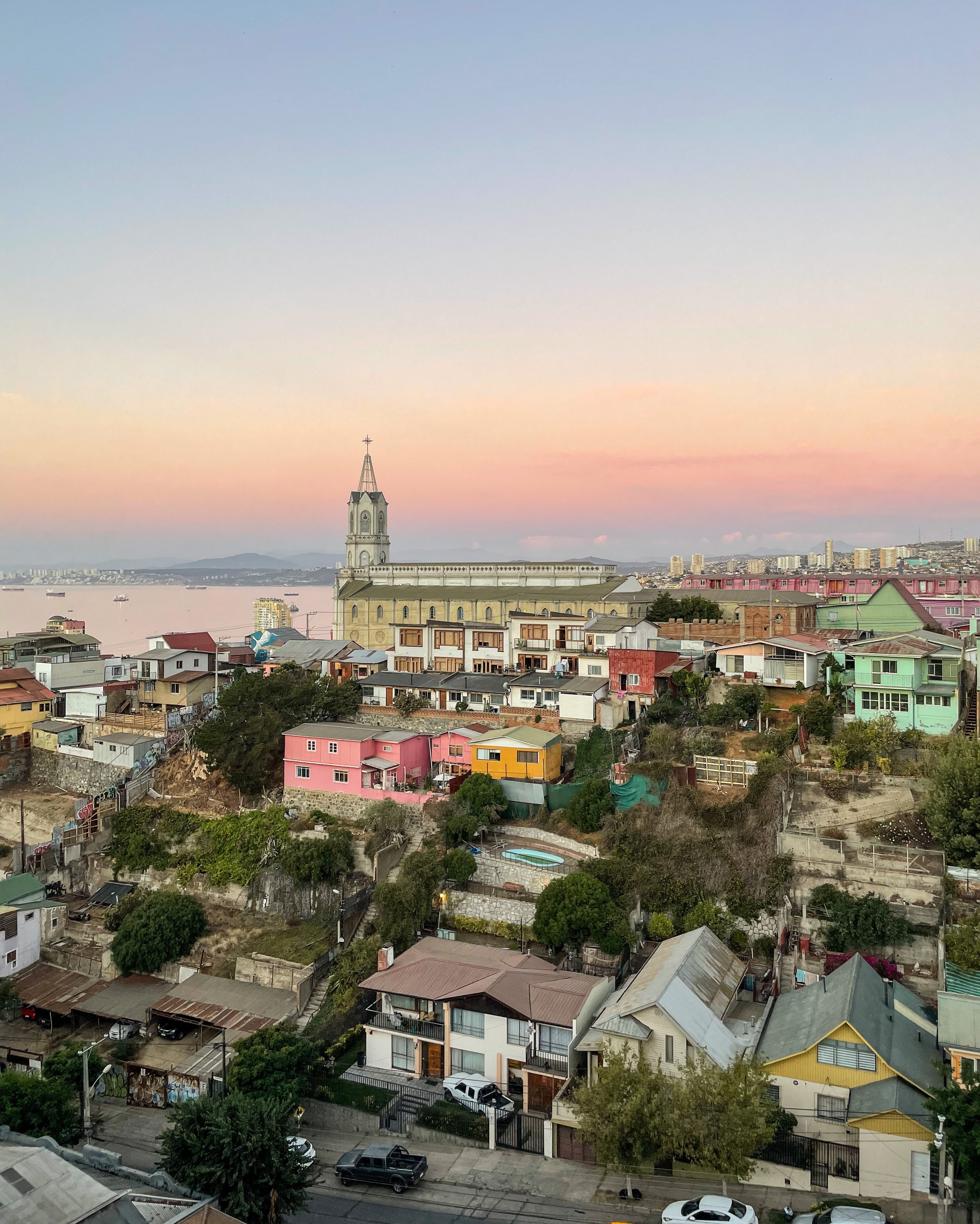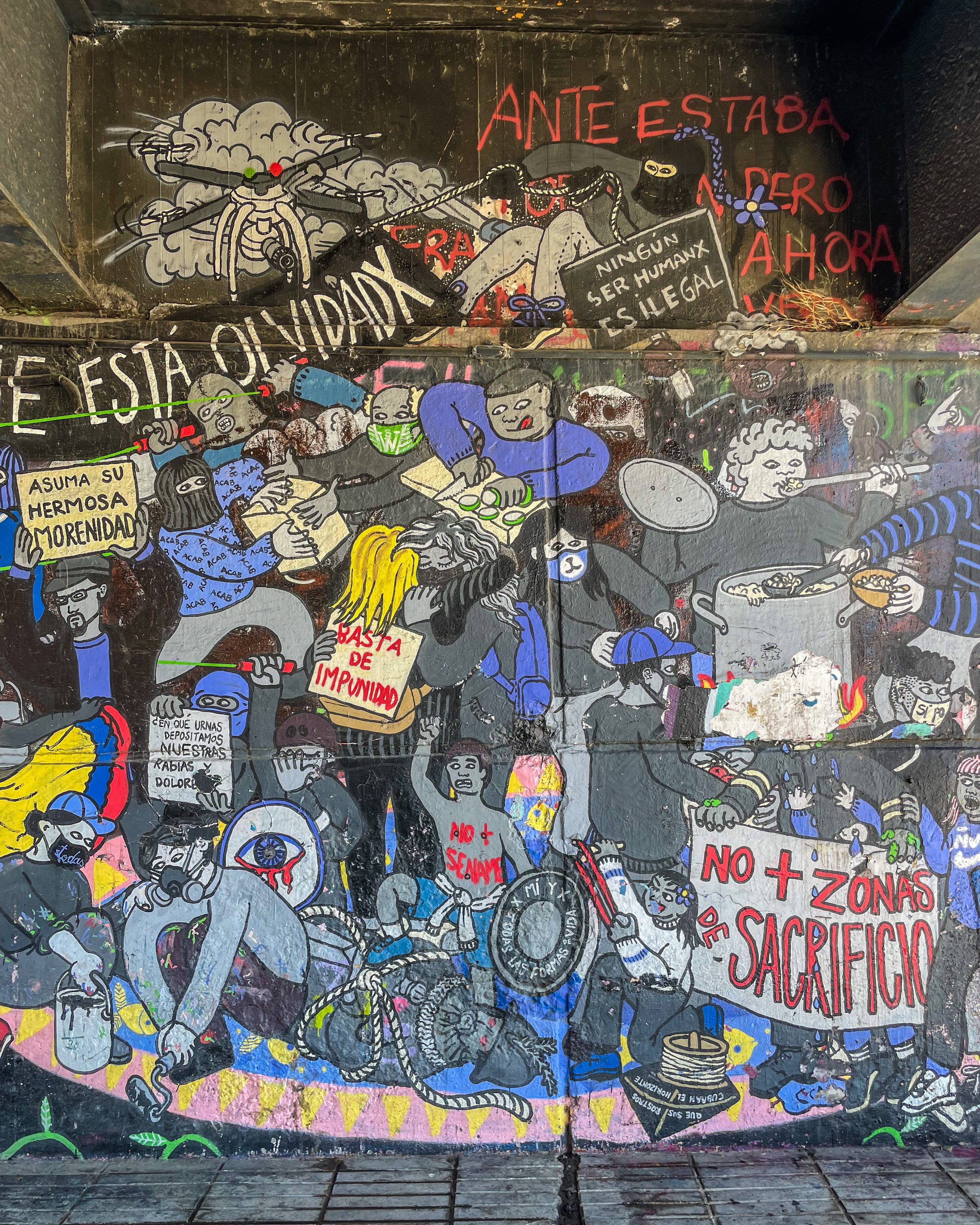Valparaiso: A city of heritage, history and colour
After a few days wandering the hilly streets of Valparaiso alone, I had many questions about the history, politics and culture of the city. So, it was perfect timing that I had booked a walking tour with Fernanda — a knowledgeable, insightful guide who answered my questions with humour and experience. (If you’re heading to Valparaiso, I highly recommend you book her private tour.)
We covered a lot of ground - figuratively and literally - so I can’t possible include everything here, but these aspects stood out most to me:
Animitas. I’ve seen these shrines along Chilean highways. From a distance it’s easy to guess that they’re a way to mark an untimely death, but Fernanda explained that animitas are more than a shrine for remembrance. Animitas act as a house for the spirits of those who passed in that location. The spirits remain there to help visitors by granting favours — like a local angel who can intercede with the higher angels on your behalf.
An animita on Serrano Street in Valparaiso’s Historic Quarter
Pictured above is an animita for four people who died when a building exploded because of a gas leak. Now, visitors pray at the animita to ask one or all of the spirits to help with their problems. For example: If your mother is sick, you ask the animita to help her recover her health. Then if your mother recovers, you affix a small plaque to the animita giving thanks to the spirit for helping. As word spreads that an animita is particularly effective or powerful, more people visit and the number of plaques will grow — and the memory of the departed are kept alive.
Lady Justice. I’m sure you’re familiar with the personification of justice from Ancient Rome. What can you picture about her? She’s blindfolded, she holds scales and a sword, right? Well, not in Valparaiso! Lady Justice in front of the Court of Appeals in the city’s downtown appears sans blindfold with the scales and sword casually at her side. What does this say about the Chilean judicial system and why is the statue there? There are a number of myths about her presence and untraditional appearance. The theory favoured by Fernanda is that the statue is a promise or a wish of a future where there’s no injustice and so Lady Justice isn’t needed. I like this optimistic outlook!
Selk’nam genocide. This came up when Fernanda walked me through a piece of street art that tells the history of Chile. The mural included a depiction of an Indigenous man missing a hand and a foot. What I came to learn is that colonizers began a campaign of extermination of the Selk’nam people in the late 19th century. The Selk’nam lived for 10,000 years on their traditional lands. But their population was reduced through genocide from 4,000 to just 100 within about 15 years. Ranchers and farmers were paid a bounty for each Selk’nam they murdered. They received this bounty by presenting a pair of Selk’nam hands, feet or ears — and later a skull. Learn more about this history, how Selk’nam people survived and how they’re now fighting for recognition and to decolonize historical perspectives in Chile here.
Social movement of 2019. Evidence of the ‘social outburst’ are visible throughout Valparaiso. The stories are told in street art and in the behaviours like those of shopkeepers who keep their storefronts secured with sliding metal grilles in case of another outburst to this day. However, perhaps the most significant result of the movement was the 2020 Chilean National Plebiscite — a referendum on whether a new constitution should be drafted. (The current constitution was put in place during the Pinochet dictatorship.) Over 78 per cent of voters were in favour of a new constitution and will vote again before September to accept or reject the new constitution that is drafted. So what began as a protest of the increase in public transport fares grew to include issues like the cost of living, privatization and social inequality. It’s inspiring to see what social change is possible when over 3.7 million Chilean people take to the streets!
Heritage Quarter. Valpo’s Historic Quarter is a UNESCO World Heritage Site. It was the leading commercial port of the Pacific coast of South America and so offers a unique example of urban and architectural development. Today, the area is protected by its heritage status, yet the city lacks funds to maintain important heritage elements like buildings, funiculars and trolleys. A big reason why is that the money made through the port is claimed by the city of Santiago. But there’s optimism here that with a young progressive city mayor and the incoming President Gabriel Boric the future could be bright for the Heritage Quarter.
Local life. I love learning about the practicalities of daily life in other cities and countries. So here’s what I found out about Portenos (aka port city people):
They take taxis up the hill. I had started to wonder why I seemed to be the only person hoofing it up my hill. Well, turns out there’s a square at the bottom of each hill where taxis are available for hire. For a very small fare of 500 - 1000 pesos ($0.80 - $1.60 CAD) they’ll drive you up! You don’t take the taxi alone though. You wait in the taxi until it’s full - and each person pays their fare - and then you’re on your way! There’s apparently even a word that means ‘up the hill road’ you can use with the taxi driver, but I don’t think there’s an English equivalent.
They party on stairs. There are countless stairwells weaving in between buildings and hills in Valpo. And they make great locations to hang out with friends, listen to some music and have drinks. When I think of where we had to party in Saskatchewan as kids — gravel pits, parking lots and public parks — these stairwells seem rather romantic!
They care for their street’s dog. There are a lot of dogs on the streets in Valpo and I found it distressing at first. But soon I noticed bowls of water left out on every street and that the dogs are all rather well fed. It’s a different type of ownership than I’m used to, but each dog is cared for by the collective of the people on their street.
Valparaiso offers decaying beauty, vibrant culture and complex history. It feels like an exciting time to be a Porteno or Portena as young people work towards creating an equitable society. I know I’ll be following the city and country’s path forward for years to come!
xx Rachel









